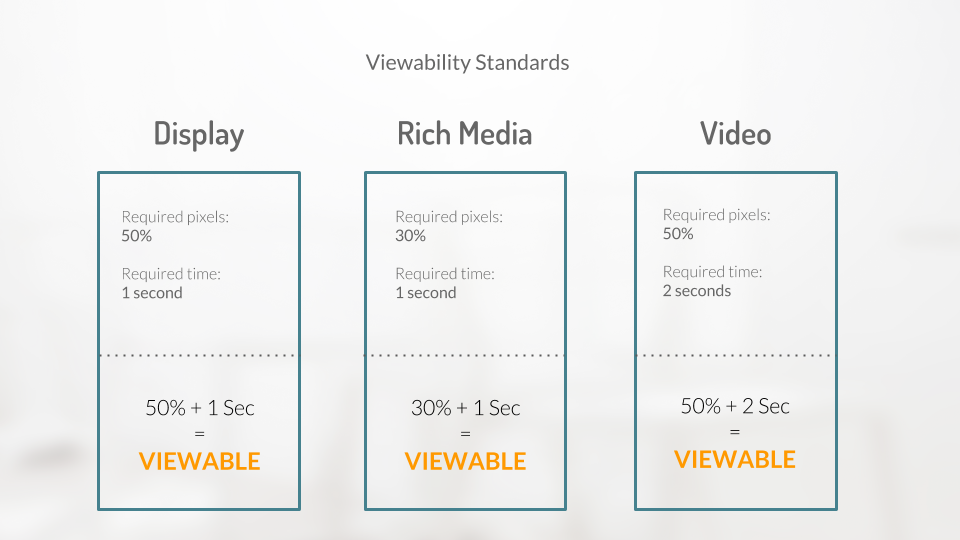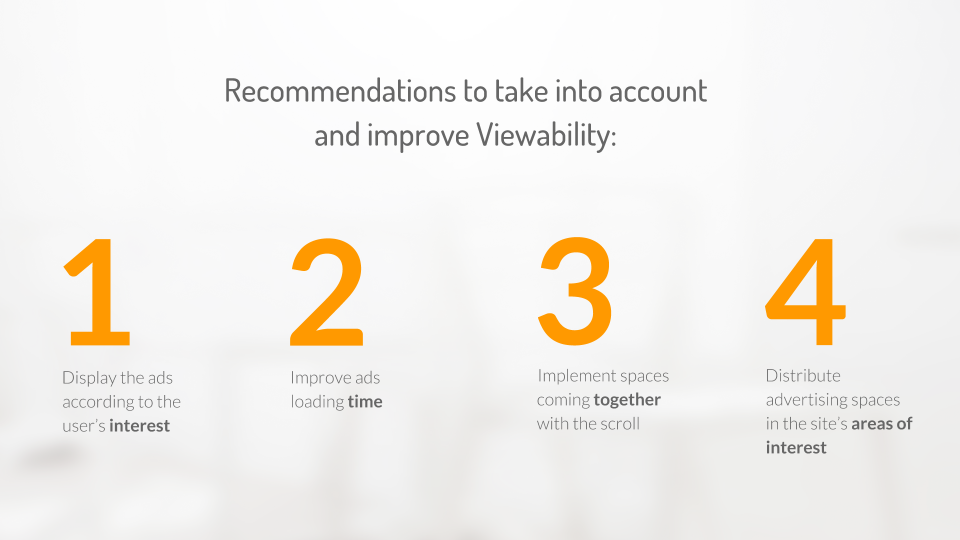Viewability is a metric used to determine when an ad has been viewed by a user.
An ad impression is considered as viewed when it is positioned continuously during a lapse of time within the browser’s visible area, thus assuming it has been viewed by the user.
According to IAB’s standards, the following variables must be considered for the metric to be accounted:
- In Display ads, 50% of the ad should be viewed at least during a second.
- In the case of Rich Media formats, 30% of the ad is considered also at least during a second.
- As regards Video ads, 50% of the ad should be viewed at least during two seconds.
However, we find that nowadays several agencies and advertisers are asking for a certain viewability percentage as a condition to buy inventory.

How can we optimize this metric if it does not reach the minimum requested?
A very important point is that the contents of the ads displayed in the site should be of interest for users. Bearing in mind that users with different interests will enter the site, it will be very valuable to analyze the audience and classify it per profiles in order to segment the ads according to the different profiles previously created. We may then avoid the ad block-out by the user and he might even find it interesting and click on it.
Another important issue regarding the user’s expertise, is the ads’ loading time. If they are delayed when being loaded, we run the risk that the user starts to scroll looking for the contents and losing the chance to display the ads.
Regarding formats, the vertical ones might be effective, as they are more suitable to be read when being scrolled; for example, the sticky ads. Native ads may be also implemented that take the site’s style to become part of the contents in a more harmonic way.
Another important consideration is the distribution of advertising spaces. They should be placed in such a way that they fit the contents of our site and not within areas the user does not pay attention to, such as before the header or in the footer.


